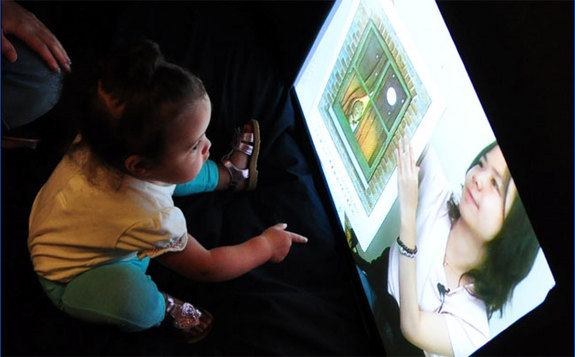Baby Blur: Infants' Eyes Take Longer to Process Movement

Rapidly changing images may look like a blur to infants, according to a new study. Although babies can see the movement, they may not be able to identify the individual elements within a moving scene as well as an adult can.
Babies' brains gradually develop the ability to use visual information to discover and process their world. Researchers found that the speed limit at which babies can recognize individual moment-to-moment changes is about half a second.
That's about 10 times slower than for adults, who can recognize rapid, individual changes that occur 50 to 70 milliseconds or slower.
"Their visual experience of changes around them is definitely different from that of an adult," study researcher Faraz Farzin said in a statement. (Farzin, who conducted the work as a graduate student at UC Davis, is now a postdoctoral fellow at Stanford University.)
To determine the speed limit on infants' visual perception, researchers monitored the eye movements of a group of 6- to 15-month-olds as they were shown four flickering squares. Three squares flickered from black to white and back, and one square flickered white to black, which was intended to draw more attention because it is out of phase with the other squares — the "odd man out."
Tracking the infants' eye movements showed that they did not spend more time looking at the odd white-to-black square, suggesting they could not distinguish it as being different, according to the researchers.
"It was surprising how coarse their resolution was," Farzin said.
Get the world’s most fascinating discoveries delivered straight to your inbox.
Specifically, the researchers found the 6- and 9-month-olds could differentiate the alternating squares up to a rate of just 0.5 hertz, or one flicker per 2 seconds; the limit for the 15-month-olds was 1 Hz, or two flickers per 2 seconds, which is eight times coarser than the resolution observed in adults who participated in the same flicker experiment. [That's Incredible! 9 Brainy Baby Abilities]
The research, which was recently published in the journal Psychological Science, suggests that for infants younger than 15 months, a TV show or movie in which scenes change faster than two frames per second most likely look like a blur. For example, 24 frames per second is about the rate at which movies are filmed — way too fast for babies to decipher.
The study was supported by funds from the National Institutes of Health and the National Science Foundation.
You can follow Live Science writer Remy Melina on Twitter @remymelina. Follow LiveScience for the latest in science news and discoveries on Twitter @livescience and on Facebook.


